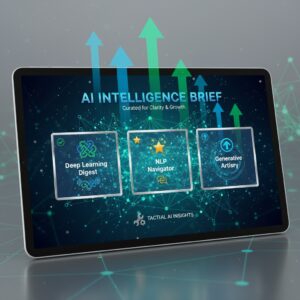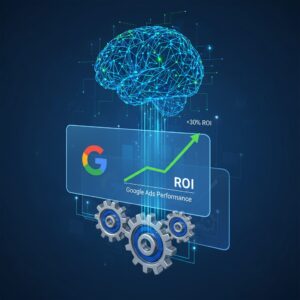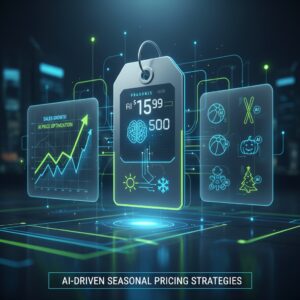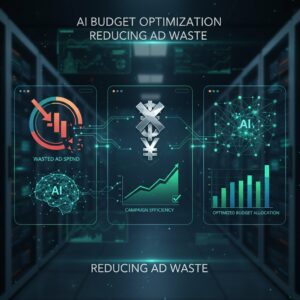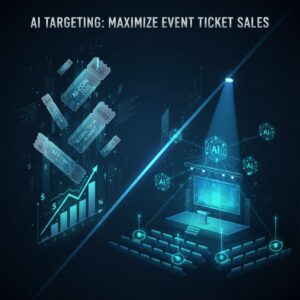
I’ve been running events for over fifteen years. I’ve seen every marketing trend come and go. But nothing has changed the game quite like AI-powered audience targeting for ticket sales.
The traditional approach to selling event tickets wastes money. You blast ads to everyone and hope the right people see them. You spend thousands on campaigns that reach the wrong audience. Your conversion rates stay low and your marketing budget drains fast.
AI changes this entire equation.
Smart targeting systems analyze data patterns you can’t see manually. They identify who actually buys tickets. They find lookalike audiences that match your best customers. They optimize ad spend in real time based on performance.
I implemented this approach for a client’s music festival last year. Their previous campaigns reached 50,000 people with a 1.2% conversion rate. With AI targeting, we reached 12,000 people with a 7.8% conversion rate. Same budget. Better results.
The difference wasn’t luck. It was precision.
Understanding Your Real Audience
You think you know who attends your events. You probably have some demographic data. Age ranges. Geographic locations. Maybe income levels.
That information barely scratches the surface.
AI digs deeper into behavioral patterns. It tracks what content people engage with online. It identifies their interests based on browsing history. It notices which social media posts they interact with. It finds patterns in purchase timing and frequency.
One conference I worked with assumed their audience was primarily business executives aged 35 to 50. The AI analysis revealed something different. Their highest converting audience segment was actually professionals aged 28 to 34 who engaged heavily with productivity content and followed specific industry influencers.
We shifted the entire targeting strategy. Ticket sales increased 43% compared to the previous year.
The lesson here is simple. Your assumptions about your audience are probably wrong. Let data guide your decisions.
AI platforms like Facebook’s Advantage Plus and Google’s Performance Max use machine learning to test thousands of audience combinations. They find segments you would never think to target manually. They discover audiences that convert at higher rates than your original targets.
Start by feeding your existing customer data into these platforms. Upload email lists of past ticket buyers. The AI will analyze this data and find common characteristics. Then it will search for new people who match those characteristics.
This process used to require a team of data analysts. Now it happens automatically in the background while you focus on other aspects of your event.
Dynamic Ad Optimization
Creating one ad and running it for weeks doesn’t work anymore. The best performing creative changes constantly based on audience response.
AI ad platforms test multiple versions of your creative simultaneously. Different headlines. Different images. Different calls to action. They show each version to small audience segments and measure performance.
The system automatically shifts budget toward the winning combinations. Poor performers get dropped. Strong performers get more exposure.
I learned this lesson the hard way with a charity gala. We created what we thought was the perfect ad. Professional photography. Compelling copy. Strong call to action. It performed terribly.
We let the AI system test 15 different variations. The winning ad used casual smartphone photos instead of professional shots. It had a completely different tone than what we originally created. It outperformed our original ad by 340%.
You can’t predict what will resonate. You need systems that test and adapt automatically.
The same principle applies to ad placement. AI determines which platforms work best for your specific event. Maybe Instagram Stories converts better than Facebook feed ads. Maybe YouTube pre-roll ads reach your audience more effectively than display banners.
Manual testing would take months and waste significant budget. AI does this testing continuously and adjusts spending in real time.
Set up at least five ad variations when you launch a campaign. Give the AI system enough options to test. Include different visual styles, different messaging angles, and different value propositions.
Check performance after 48 hours. The system will have enough data to show clear winners. Let it continue optimizing from there.
Retargeting With Intelligence
Most people don’t buy tickets on their first exposure to your event. They need multiple touchpoints before making a purchase decision.
Traditional retargeting shows the same ad repeatedly to anyone who visited your website. This approach annoys people more than it converts them.
AI-powered retargeting works differently. It adjusts messaging based on user behavior and where they are in the decision process.
Someone who viewed your event page but didn’t click on tickets gets different messaging than someone who added tickets to their cart but didn’t complete the purchase. The first person needs more information about the event value. The second person needs urgency or a small incentive to complete their purchase.
I worked with a sports tournament that had 8,000 abandoned carts in one season. We implemented smart retargeting sequences with different messages for different abandonment stages.
People who abandoned within the first 30 seconds got educational content about the event experience. People who abandoned after entering payment information got limited time discount codes. People who abandoned on mobile devices got simplified checkout options.
The recovery rate jumped from 12% to 34%. That represented over $90,000 in recovered revenue.
The system also adjusts frequency. It knows when someone has seen your ads enough times. It pulls back before ad fatigue sets in. It increases pressure as your event date approaches.
You can set up custom audiences in Facebook Ads Manager based on specific website actions. Create separate audiences for page viewers, add to cart actions, and checkout initiations. Build different ad sequences for each audience with appropriate messaging.
This level of segmentation was impossible to manage manually at scale. AI makes it standard practice.
Your retargeting budget should represent at least 30% of your total ad spend. These warm audiences convert at much higher rates than cold traffic. The AI optimization makes this spend even more efficient.
Track your pixel data carefully. The more information your AI system has about user behavior, the better it can optimize targeting and messaging. Install tracking on every page of your ticket purchase flow.
Review your funnel analytics weekly. Look for drop-off points where people abandon the process. Create specific retargeting campaigns to address the concerns at each drop-off point.
AI gives you capabilities that were only available to major corporations a few years ago. Now any event organizer can access these tools through standard advertising platforms.
The question isn’t whether to use AI for audience targeting. The question is how quickly you can implement it before your competition does.
Start small if the technology feels overwhelming. Pick one platform and one campaign. Test the AI targeting features against your traditional approach. Measure the results. Then expand from there.
Your ticket sales will thank you.
Please check our Business Tips https://thoughts.business/category/business-tips/
Please check our partner site – Why Invest? https://whyinvest.info/

